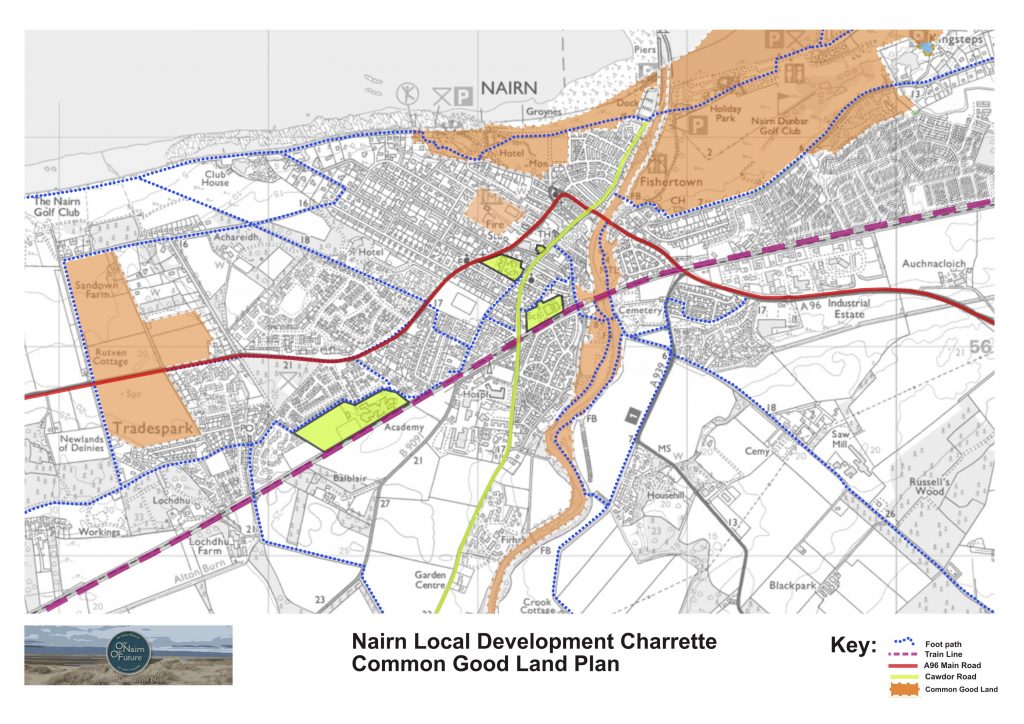
Nairn’s Common Good story is well told by ‘A Gurn from Nurn’. There you can read the full story (which was originally researched and written by Nairn West and Suburban Community Council) but, we can take a quick look, with thanks to NWSCC, over how Nairnshire, and the town of Nairn, has been so well provided for:
- In 1589, King James VI confirmed Burgh status on Nairn and conferred what we now call the Common Good land, then known as the Commonties, stretching from Tradespark to Kingsteps to the township;
- the collection of tolls by the Bailies, which could be used for the benefit of the Burgh, led to the creation of the Common Good Fund, which in 1832 became a stand alone fund. The burgh and councils were free to add to the Common Good lands with further purchases, donations, and investments in land; and
- following the 1975 local government organisation, Scottish Burghs were replaced by District and Regional Councils. District Councils were scrapped in 1995. Management and titles of Common Good assets transferred to the Regional Councils, wresting control or decision making from the community
This centralising of control was not unique to Nairn We can see this theme played out amongst all regions of Scotland.
Today, NPF4 and the Planning (Scotland) Act 2019 seek to re-establish community direction in planning, giving us all the opportunity to influence the future outcomes of spatial land use in Nairnshire. What does make Nairn so unique is the successful protection of those Common Good lands. Without them, it is hard to imagine what our beach front may look like, what the riverside and river paths may have become, and what would remain of the Viewfield.
Some of those Common Good lands have been leased, such as Sandown, the caravan park, and Nairn Dunbar golf course, whilst others continue to benefit everyone with no cost, such as the Links, Riverside, and Viewfield green spaces.
We would love to know how you see those Common Good assets fitting within a future Nairn.
How would you protect them?
How would you link them with other spaces and routes through Nairnshire?
How would you increase their value to the people of Nairnshire?
Do you think residents of the town should have more say in their management?
The use of spaces, such as the Common Good, and as we looked at last week, those areas zoned for development by the Inner Moray Firth Local Development Plan 2, are how our Local Place Plan can influence future spatial decision making that will shape Nairnshire for the future.
You can send us your thoughts directly at lpp@nicennairn.org.uk, or by commenting below. We look forward to hearing from you.

The Nairn Common Good also includes the foreshore to LAT 0`00m from some point East of Nairn to another point West of Nairn. A quite unusual feature as this is normally owned by Crown Estate (Scotland).
Thanks Jimmy. We will get that over to our maps team and validate.